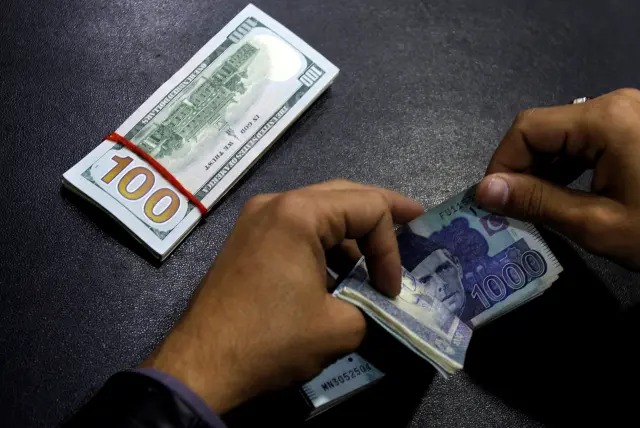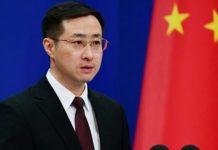ISLAMABAD: Foreign investors are reluctant to invest in Pakistan due to rupee’s volatility against dollar, thus depriving the cash-strapped country of a potential source to absorb the financial shocks to its struggling economy, reports WealthPK.
In the given scenario, there is a strong need for foreign direct investment (FDI) to boost the economy and increase foreign exchange reserves, said an expert.
Talking to WealthPK, Director General of the International Institute of Islamic Economics (IIIE) of International Islamic University (IIU) Professor Dr Abdul Rashid said two main advantages of FDI are economic growth and increase in foreign exchange reserves. He said the current situation of economy was unsatisfactory. Low economic growth and continuous depreciation of foreign exchange reserves require a huge inflow of FDI, he added.
Dr Rashid further said FDI in Pakistan averaged $158.21 million from 1997 to 2022. It was $1.87 billion in the year 2022 and less than the previous years. In 2020, the FDI was $2.06 billion, 7.92% less than that in 2019, whereas in 2019, it was $2.23 billion, 28% higher than that in 2018.
“FDI produces a positive effect on economic growth in host countries. One convincing argument is that it consists of a package of capital, technology, management, and market access. The other positive impact is that it increases the host country’s exports to a maximum level and decreases imports to a negligible level”, Dr Rashid said.
He further said Pakistan was basically an agricultural economy and its industrial capacity was less to process the locally produced agricultural raw material. This makes it imperative for the government to improve the country’s manufacturing capacity. In order to achieve this objective, however, changing industrial policies have been implemented in different times with a changing focus on either the private sector or the public sector.
“Investors would not want to invest in a country where the economic fundamentals are so weak that it is unpredictable what the government would do next to prop up a sagging economy. In countries of high economic strength, investors are assured of growth in economic strength and increased opportunities for business,” Dr Rashid added.
He said there were many reasons behind the decrease in FDI, with the rapid depreciation of rupee against dollar as one for the last couple of years.
Pakistan’s policies on foreign investment are not much attractive, he said, adding that availability, reliability, and cost of infrastructure facilities were important ingredients of a business environment conducive to foreign investment. Pakistan compares unfavourably in infrastructure facilities with other developing countries that have attracted higher levels of foreign investment.
Dr Rashid further said though investment approval requirement had been removed, other regulations instituting the need for other administrative approvals, however, were still in place. Numerous permits and clearances from different government agencies at national, regional and local levels still apply to investors.
He suggested that the government remove all hurdles and barriers hindering FDI
ISLAMABAD, Sept 4 (INP): Foreign investors are reluctant to invest in Pakistan due to rupee’s volatility against dollar, thus depriving the cash-strapped country of a potential source to absorb the financial shocks to its struggling economy, reports WealthPK.
In the given scenario, there is a strong need for foreign direct investment (FDI) to boost the economy and increase foreign exchange reserves, said an expert.
Talking to WealthPK, Director General of the International Institute of Islamic Economics (IIIE) of International Islamic University (IIU) Professor Dr Abdul Rashid said two main advantages of FDI are economic growth and increase in foreign exchange reserves. He said the current situation of economy was unsatisfactory. Low economic growth and continuous depreciation of foreign exchange reserves require a huge inflow of FDI, he added.
Dr Rashid further said FDI in Pakistan averaged $158.21 million from 1997 to 2022. It was $1.87 billion in the year 2022 and less than the previous years. In 2020, the FDI was $2.06 billion, 7.92% less than that in 2019, whereas in 2019, it was $2.23 billion, 28% higher than that in 2018.
“FDI produces a positive effect on economic growth in host countries. One convincing argument is that it consists of a package of capital, technology, management, and market access. The other positive impact is that it increases the host country’s exports to a maximum level and decreases imports to a negligible level”, Dr Rashid said.
He further said Pakistan was basically an agricultural economy and its industrial capacity was less to process the locally produced agricultural raw material. This makes it imperative for the government to improve the country’s manufacturing capacity. In order to achieve this objective, however, changing industrial policies have been implemented in different times with a changing focus on either the private sector or the public sector.
“Investors would not want to invest in a country where the economic fundamentals are so weak that it is unpredictable what the government would do next to prop up a sagging economy. In countries of high economic strength, investors are assured of growth in economic strength and increased opportunities for business,” Dr Rashid added.
He said there were many reasons behind the decrease in FDI, with the rapid depreciation of rupee against dollar as one for the last couple of years.
Pakistan’s policies on foreign investment are not much attractive, he said, adding that availability, reliability, and cost of infrastructure facilities were important ingredients of a business environment conducive to foreign investment. Pakistan compares unfavourably in infrastructure facilities with other developing countries that have attracted higher levels of foreign investment.
Dr Rashid further said though investment approval requirement had been removed, other regulations instituting the need for other administrative approvals, however, were still in place. Numerous permits and clearances from different government agencies at national, regional and local levels still apply to investors.
He suggested that the government remove all hurdles and barriers hindering FDI




